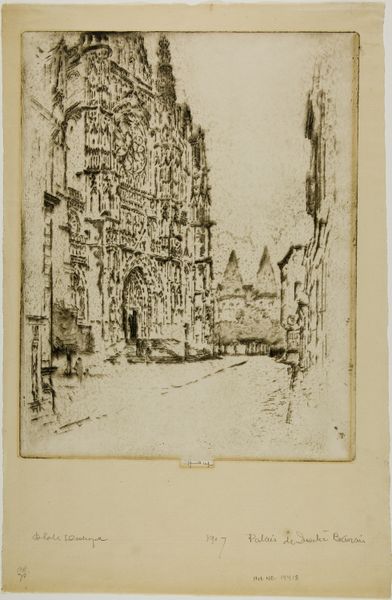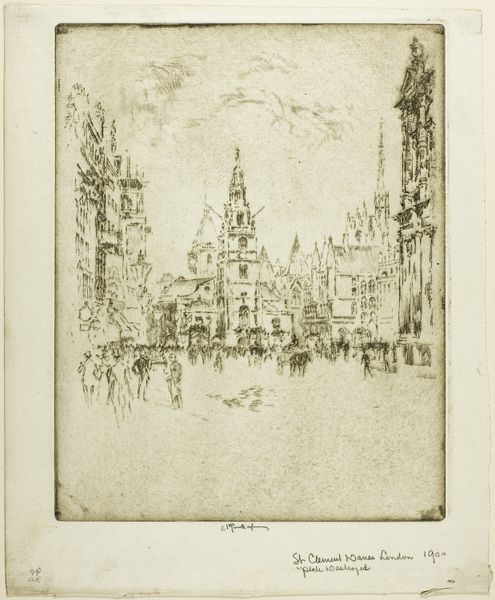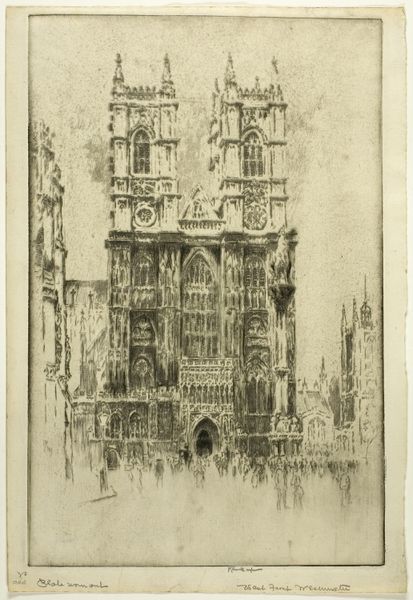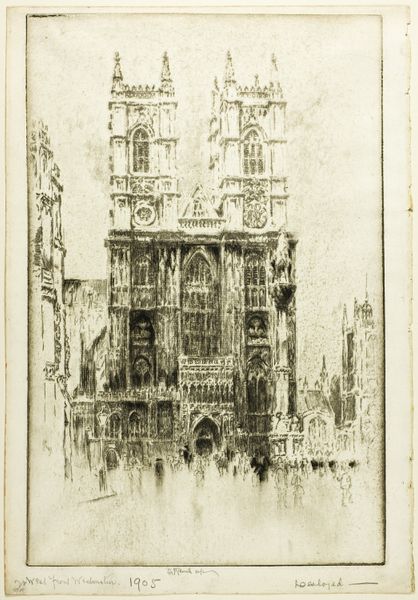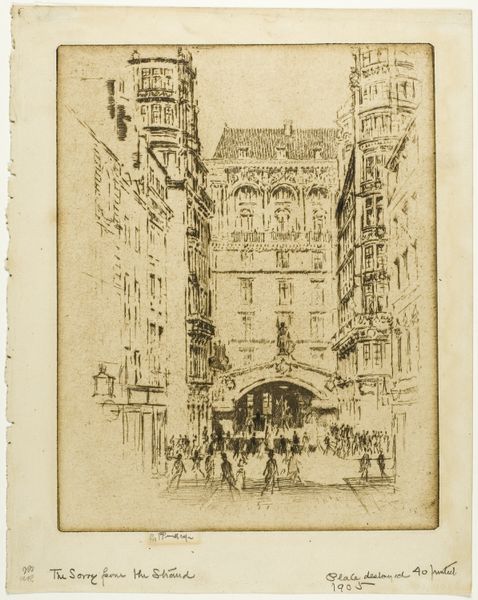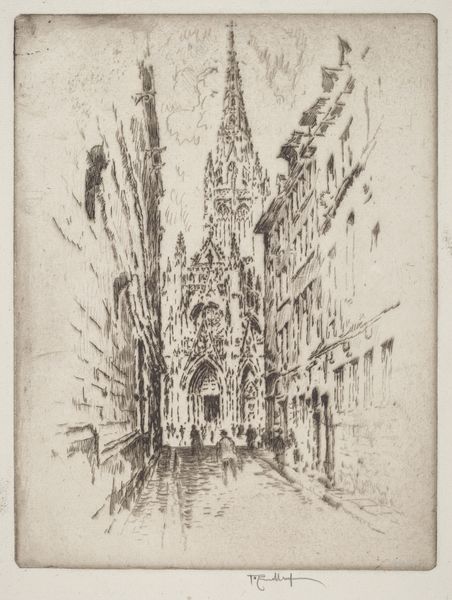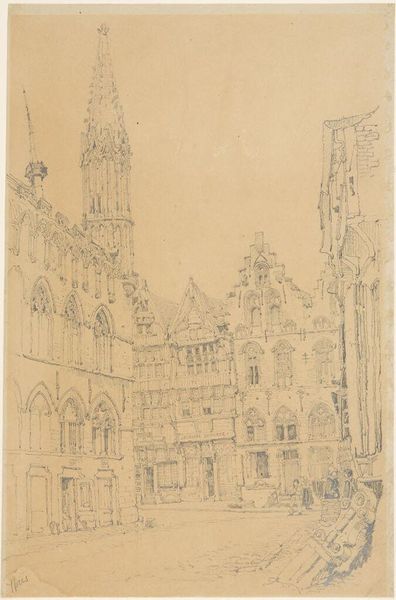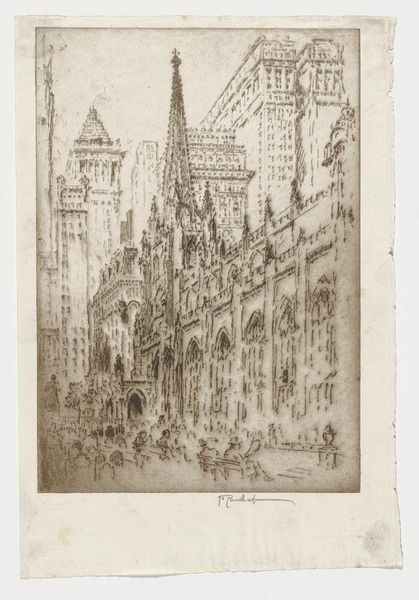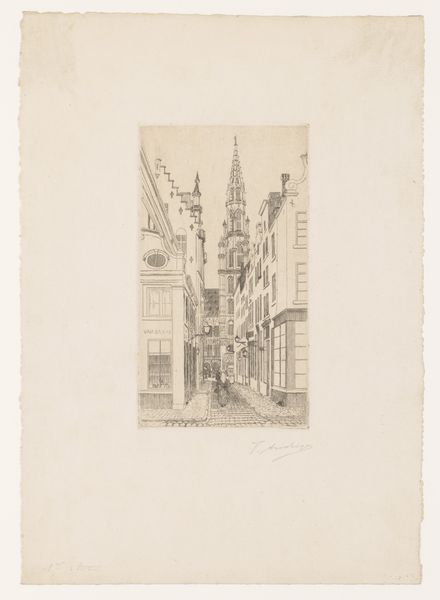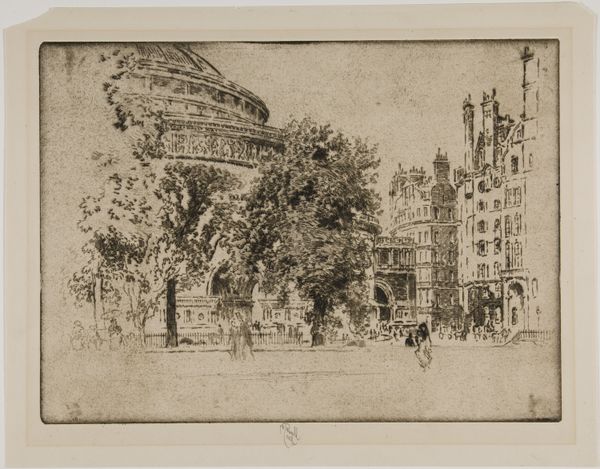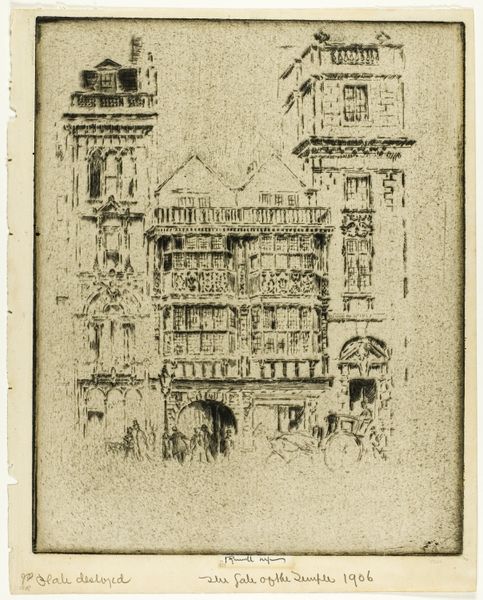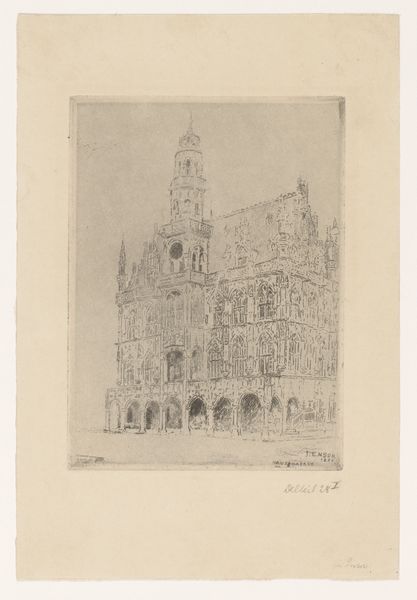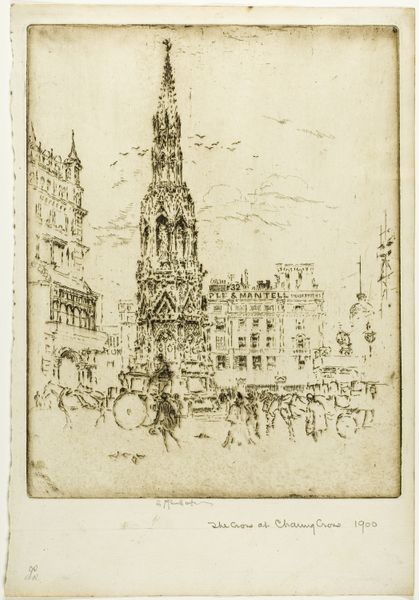
drawing, print, etching, paper
#
drawing
# print
#
etching
#
landscape
#
etching
#
paper
#
cityscape
Dimensions: 281 × 216 mm (image); 346 × 260 mm (sheet)
Copyright: Public Domain
Curator: This etching from 1905 by Joseph Pennell is entitled "The Guild Hall," a London landmark depicted in his characteristic style. What's your initial read of the piece? Editor: It feels...ephemeral, almost dissolving before your eyes. The detail is there, especially in the architecture, but it's veiled, softened, dreamlike. Curator: The etching process itself lends to that atmospheric quality. Consider how printmaking at the turn of the century offered new means to visualize social subjects at a time when London's class system was undergoing great reform. Editor: Exactly! This soft focus also subtly speaks to the building's function and representation as an institution in city life. Are we truly seeing it clearly, or are the etched lines already obscuring our access? Curator: Interesting! Pennell's perspective is key, isn't it? The low vantage point, the figures in the foreground...They’re part of this civic stage. His aesthetic choices, rooted in Whistler's influence and the Etching Revival movement, speak to the social dynamics present. Editor: I see a hint of American exceptionalism, too. Pennell, an American expatriate, captures the energy and ambition, as he would again after his return to the United States and in his lithographs about WWI factory work. This isn't merely documentation, but also subtle advocacy of a "working city". Curator: His depictions often idealize productivity, obscuring any grittier realities. "The Guild Hall" hints at London's complexities and contradictions. But the light almost romanticizes power rather than addressing potential systemic inequalities present at the time, wouldn't you say? Editor: Perhaps, yet its accessibility, produced to be widely distributed and consumed, becomes democratic. A paradox is thus struck that reveals the socio-economic structure that has historically influenced artistic creations. Food for thought on Pennell's complex position in this social context. Curator: Indeed, analyzing the work beyond the mere visual narrative pushes the viewers to consider it in terms of accessibility, distribution, and engagement with political reform, which in turn emphasizes a dialogical interpretation, linking his artworks to socio-political developments in early 20th century. Editor: Looking at this piece in a new light prompts crucial insights into society at that time. Curator: And its ability to communicate these dialogues with a contemporary viewer.
Comments
No comments
Be the first to comment and join the conversation on the ultimate creative platform.
